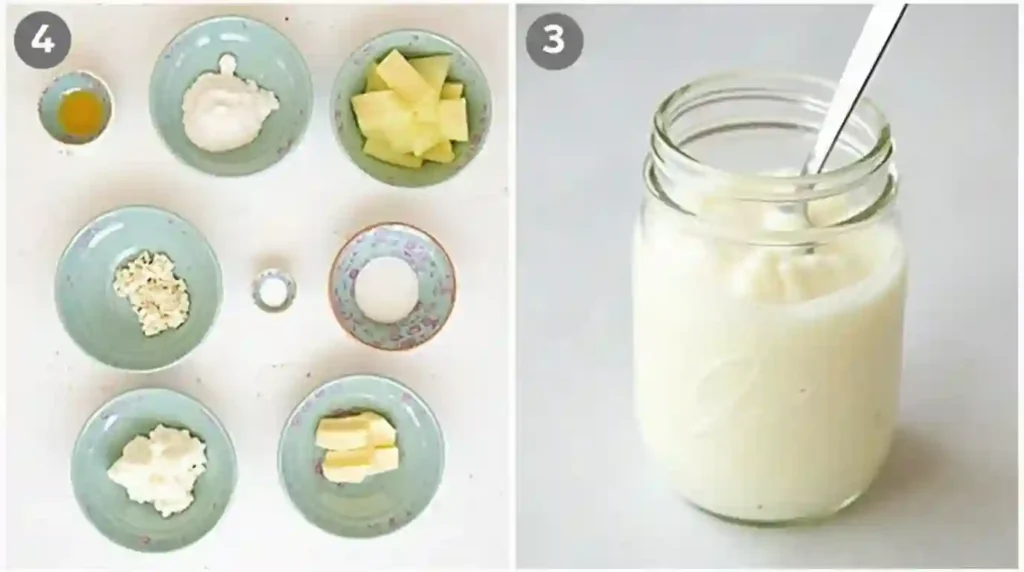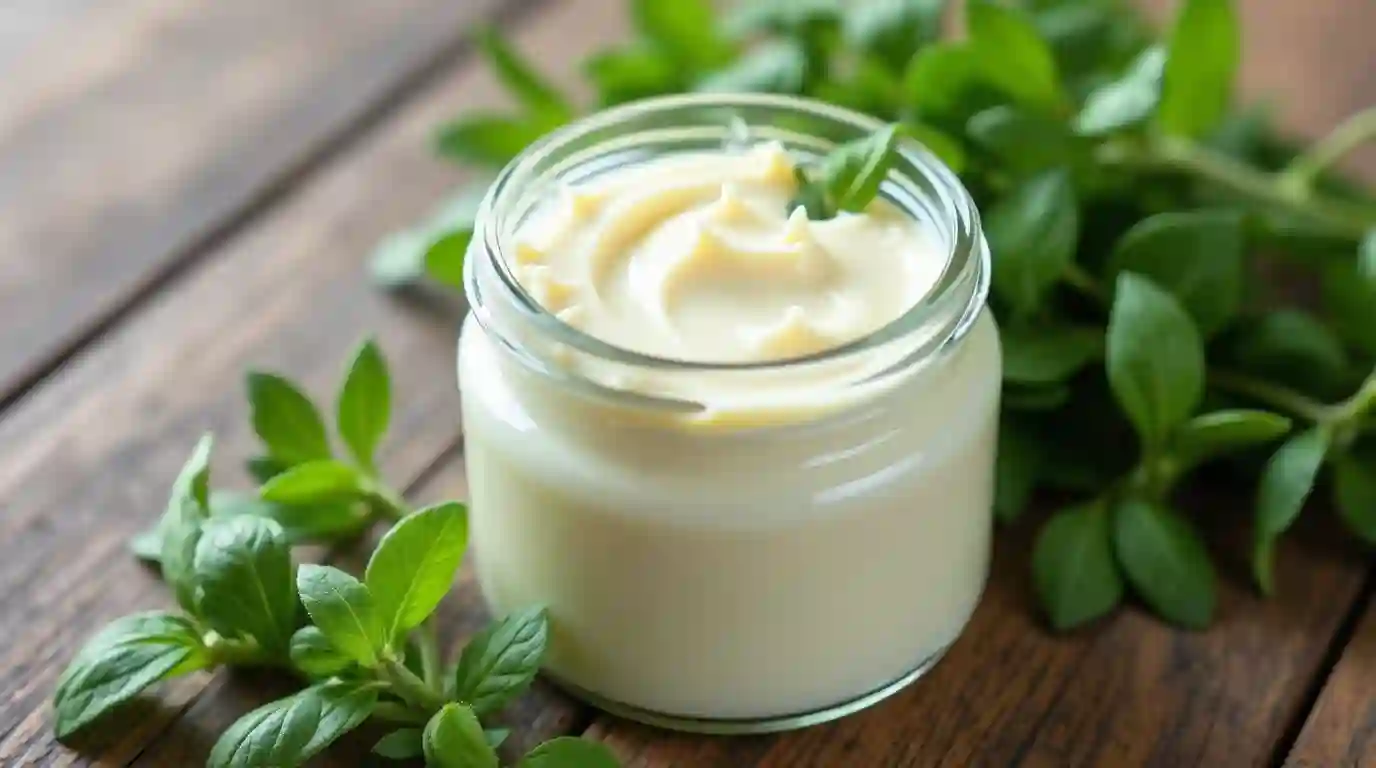Crème fraiche is a culinary delight that’s often overlooked in American kitchens. It’s creamy, tangy, and oh-so-versatile! In this guide, we’re diving deep into everything crème fraîche, from what it is and how it’s made, to its various uses in cooking and baking. You’ll also find handy tips on substitutes and a section addressing common questions. By the end, you’ll be armed with all the knowledge to incorporate this fantastic ingredient into your culinary repertoire. Now, let’s get started!
What is Crème fraiche?
The Definition of Crème Fraîche
So, what exactly is Crème fraiche? It’s a rich, slightly tangy dairy product that’s popular in French cuisine. The name translates to “fresh cream,” and that’s just what it is—a smooth, thick cream that’s made by adding a little bacterial culture to heavy cream. The bacteria ferment the cream, giving it that delightful tang and thick texture that so many love.
What sets Crème fraiche apart from other dairy products is its fat content. Typically containing around 30-45% fat, it’s thicker than sour cream but not as dense as cream cheese. This luscious consistency makes it ideal for both cooking and as a topping.
Origins and History of Crème Fraîche
The history of crème fraîche goes way back, firmly rooted in French culinary traditions. It originated in France, where farmers would let fresh cream sit out overnight to allow naturally occurring bacteria to ferment it. This process not only preserved the cream but also enriched its flavor.
As French culture and cuisine spread throughout the world, crème fraîche made its way into other cooking traditions. Today, it’s becoming increasingly popular in the United States, where chefs and home cooks alike are discovering its versatility and delightful flavor.
So whether you’re drizzling it over desserts, including it in sauces, or using it as a dressing, crème fraîche brings a unique creaminess that elevates any dish. Now, let’s explore how to make it right in your kitchen!
How to Make Crème fraiche at Home
Ingredient Requirements for Homemade Crème Fraîche
Making your own crème fraîche at home is surprisingly simple and requires just a few ingredients. Here’s what you’ll need:
| Ingredients | Quantities |
|---|---|
| Heavy cream | 1 cup |
| Buttermilk or yogurt | 2 tablespoons |
With these basic ingredients, you’ll have a creamy, tangy crème fraîche ready to enhance your dishes.
Step-by-Step Instructions to Make Crème Fraîche

Now that you have your ingredients, let’s jump into the steps for making crème fraîche:
- Combine Ingredients: In a clean glass jar, pour in the heavy cream. Next, add the buttermilk or yogurt. Stir gently until well combined. The bacteria in the buttermilk or yogurt will ferment the cream.
- Cover and Wait: Loosely cover the jar with a clean cloth or a lid. This allows air to pass while preventing dust from getting in. Leave it at room temperature (about 70°F or 21°C) for 12 to 24 hours. During this time, the mixture will thicken and develop that signature tangy flavor.
- Refrigerate: After the fermentation period, you’ll notice it’s thicker. Give it another stir, then seal it properly and place it in the fridge. Your homemade crème fraîche can be stored for up to 2 weeks.
And there you have it! Homemade crème fraîche is ready to elevate your meals. Whether you’re using it in a savory sauce or drizzling it over a dessert, the rich flavor it brings is unbeatable.
Crème Fraîche vs. Other Dairy Products
Crème Fraîche vs. Sour Cream: Key Differences
When it comes to creamy toppings, crème fraîche and sour cream often come up in conversations. While both have a tangy flavor, they differ in texture and fat content. Crème fraîche has a higher fat percentage, usually between 30-45%, which gives it a thicker consistency. On the other hand, sour cream typically has about 20% fat, making it lighter.
Another difference is the fermentation process. Crème fraîche is fermented with specific cultures that give it a smoother taste, while sour cream has a sharper flavor profile. Therefore, while they can be used interchangeably in some recipes, using crème fraîche will add a subtler touch to your dish.
Crème Fraîche vs. Heavy Cream: What’s the Difference?
Now, let’s talk about how crème fraîche stacks up against heavy cream. Heavy cream is simply unfermented cream with a fat content of at least 36%. It’s perfect for whipping and creating structured dishes, but it lacks the complex flavor that crème fraîche offers.
While both are creamy, crème fraîche brings an additional layer of acidity and richness to your meals. If you’re looking for something with more depth and versatility in cooking, crème fraîche is the way to go.
What is Crème Fraîche Called in America?
In the United States, crème fraîche is still referred to by its French name. While it may not be as readily available as sour cream, it’s often found in specialty grocery stores or made at home.
With this understanding of how crème fraîche differs from other dairy products, you’re now prepared to choose the right ingredient for your recipes. Next, let’s discover the culinary uses of this delightful cream!
Culinary Uses of Crème Fraîche
Savory Dishes Featuring Crème Fraîche

Alright, let’s dive into the delicious world of crème fraîche and its culinary uses! First off, it shines in savory dishes. You can stir it into soups for a luxurious texture and flavor. Just a dollop can elevate your favorite potato or tomato soup, making it richer and creamier.
Additionally, crème fraîche is perfect for sauces. Whether you’re making a creamy pasta sauce or a base for a gratin, it brings a unique tanginess that no other ingredient can match. Plus, it curdles less than sour cream, so you can cook with it without worrying about separation.
If you love to braise meats, try adding crème fraîche to your pot. It complements dishes like coq au vin or beef stroganoff beautifully. Simply mix it in at the end of cooking for a delightful finish.
Sweet Treats Made Better with Crème fraiche

But don’t think crème fraîche is just for savory meals! It’s magnificent in desserts too. You can use it as a topping for cakes or fresh fruit, adding a luxurious texture that pairs wonderfully with sweet flavors.
One delicious option is to whip it with a bit of sugar and vanilla. Use this whipped crème fraîche as a delightful complement to pies, tarts, or even pancakes. It adds a tangy twist to desserts that truly makes them sing.
Moreover, you can incorporate crème fraîche into your baking. It can be a fantastic addition to cake batters, giving moistness and richness. So, whether you’re cooking a savory meal or whipping up a sweet treat, crème fraîche is an ingredient that’s worth keeping handy in your kitchen.
For more interesting topics click on the following topics:
FAQs About Crème Fraîche )
Common Questions Crème fraiche recipes
Now, let’s tackle some frequently asked questions about crème fraîche. You might be wondering how to store it or its shelf life. Good news! When stored in an airtight container in the fridge, crème fraîche can last up to two weeks. Just remember to check for any off smells or changes in texture before using.
Can I Substitute Crème Fraîche?
Another common question revolves around substitutions. If you’re out of crème fraîche, don’t panic. You can use sour cream in a pinch, but keep in mind that the taste will be a bit sharper. Alternatively, mixing equal parts of Greek yogurt and heavy cream can mimic the consistency and creaminess of crème fraîche. Just adjust to your flavor preference!
Additional Tips for Using Crème fraiche
Lastly, if you’re using crème fraîche in a hot dish or baking, add it toward the end of the cooking process. This way, you’ll retain its luxurious texture and tangy flavor.
For more delicious recipes that feature crème fraîche, check out our other articles on the website. You’ll find a variety of dishes that can inspire your culinary adventures!
Embrace this versatile ingredient, and watch as it transforms your cooking into something truly special!
Benefits of Using Crème Fraîche
Nutritional Advantages of Crème Fraîche
Using crème fraîche in your cooking not only enhances flavor but also brings several nutritional benefits. For starters, it is a good source of healthy fats. Unlike many fat substitutes, the fats in crème fraîche are essential for your body’s energy and can help with nutrient absorption. Additionally, it contains vitamins such as A, D, E, and K, which are crucial for your overall health.
Moreover, crème fraîche tends to have fewer additives than many commercial sour creams and yogurt, making it a cleaner option. Since it’s made from cream and a bacterial culture, you can enjoy its creamy goodness without worrying about prolonged shelf lives filled with chemical preservatives.
Digestive Benefits of Crème fraiche
Another perk of using crème fraîche is its probiotic content. The bacteria used during fermentation can aid digestion and promote gut health. This means that adding crème fraîche to your meals could help support a healthy digestive system.
Furthermore, many people find that they can tolerate crème fraîche better than other dairy products. This is likely because of its unique fermentation process, which can break down lactose, making it easier to digest for those who are lactose sensitive.
Overall, incorporating crème fraîche into your diet can be a flavorful way to boost your meals while providing beneficial nutrients. So, not only are you enjoying culinary delights, but you’re also doing something good for your body.
Conclusion and Final Thoughts
Embracing Crème fraiche recipes in Your Cooking Journey

In conclusion, crème fraîche is a versatile ingredient that deserves a prominent place in your kitchen. Whether you’re whisking it into savory sauces or dolloping it onto desserts, its creamy texture and tangy flavor can elevate almost any dish.
Additionally, as we’ve discussed, it’s not just about taste; the nutritional benefits and digestive advantages further enhance its appeal. The good fats, vitamins, and probiotics make crème fraîche a delightful addition to your meals.
Your Cooking Adventure Awaits with Crème Fraîche
So, why not give it a try? Whether you make your own homemade crème fraîche or buy it from the store, get creative in the kitchen. Experiment with it in recipes, and discover your new favorite ways to enjoy this delectable ingredient.
Lastly, if you’re looking for more inspiration, check out our other articles focused on recipes that include crème fraîche and similar ingredients. Your cooking adventure is just beginning, and crème fraîche is the perfect companion!
In conclusion, the versatility of crème fraîche opens up a world of culinary possibilities. Whether in savory or sweet dishes, it enhances flavors and creates delightful textures. So, go ahead and try these recipes! Don’t be afraid to experiment and find new ways to incorporate crème fraîche into your cooking. Your kitchen adventure awaits, and it promises to be delicious!




